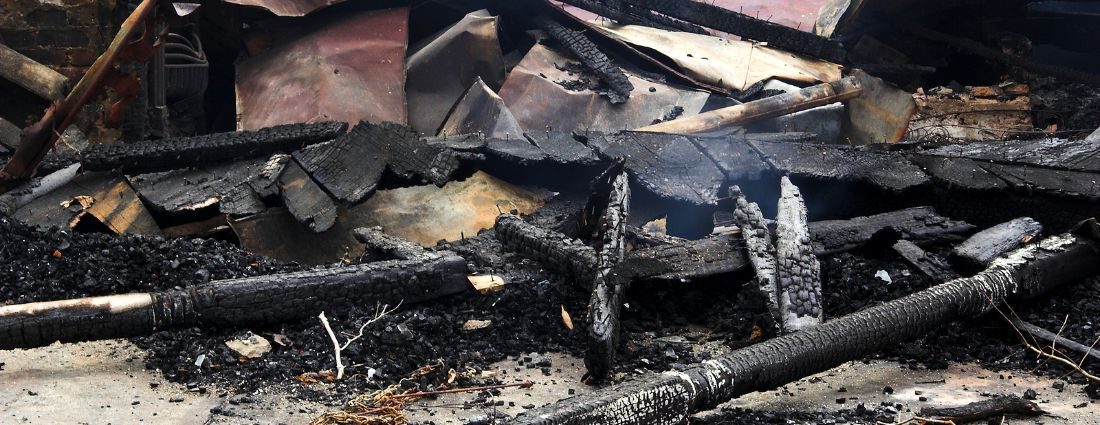You may be aware that house fires are most likely caused by kitchen accidents and appliances, home electrical systems, coil space heaters, and smoking-related accidents. However, did you know that different types of residential fires may need to be approached differently for cleanup and repair? Your homeowner’s insurance may also classify a blaze as primary or secondary when you try to file a claim for repairs. What does that mean?
At Disaster Kleenup Specialists, we’ve put together this handy checklist to help you differentiate between the 6 common types of home fire damage based on fuel type and the 2 broader categories used by many insurers.
- Class A Fire Damage
- Class B Fire Damage
- Class C Fire Damage
- Class D Fire Damage
- Class E Fire Damage
- Class F Fire Damage
- Primary Fire Damage
- Secondary Fire Damage
1. Class A Fire Damage
Class A fires are fueled by flammable solids, aka ordinary combustible materials. Embers are started by plastics, paper, rubber, wood, or cloth which leave ash behind. These blazes are often extinguished by water or other extinguishing agents.
2. Class B Fire Damage
Class B fires are fueled by high-hazard flammable liquids, combustible liquids, or solids that can be liquefied. Gases, solvents, petroleum, tars, oil-based paints, alcohols, lacquers, and solvents are usually involved. Foam extinguishing agents commonly extinguish these blazes.
3. Class C Fire Damage
Class C fires are fueled by flammable solids or liquids that would regularly be considered class A or B, except for the addition of energized electrical equipment. These blazes are often extinguished by carbon dioxide or dry chemicals to reduce the chance of electrocution.
4. Class D Fire Damage
A combination of combustible metals fuel class D fires, these metals can include magnesium, sodium, lithium, potassium, titanium, or zirconium. Blazes are extinguished by specialized powders, sodium chloride, or sand because water can break into explosive hydrogen and oxygen by extremely high-temperature flames.
5. Class E Fire Damage
Class E fires are fueled by flammable solids or liquids that would regularly be considered class A or B, except for the addition of energized electrical equipment. These would include sparks started by faulty wiring, worn-out home appliances, and improper electrical outlet use.
6. Class F Fire Damage
Class F fires (or Class K, according to the NFPA) are fueled by combustible cooking oils or fats. These are typically kitchen-related. They are very destructive and burn hotter than class B flammable liquids.
7. Primary Fire Damage
If your insurance company classifies your losses as primary, that means they were caused by contact with the flames. The exterior or interiors and contents were burned.
8. Secondary Fire Damage
If your insurance company classifies your losses as secondary, that means they were caused by contact with smoke (soot, ash, and odors), flame-related corrosives (like grease, oil, or rubber), or even the elements (water damage from rain, snow, or extinguishing efforts) as the blaze exposed the insides of your building. The devastation to the interiors and contents of a home or business is more likely to be classified as secondary.
House Fire Cleanup In Monterey & Santa Cruz
As you can see, the types of damage and extent of needed cleanup and repairs resulting from a blaze can vary greatly. At Disaster Kleenup Specialists, we can help you with house fire clean-up and repairs, no matter the source. Contact us for help in Monterey County or the Santa Cruz area to schedule restoration services today.

